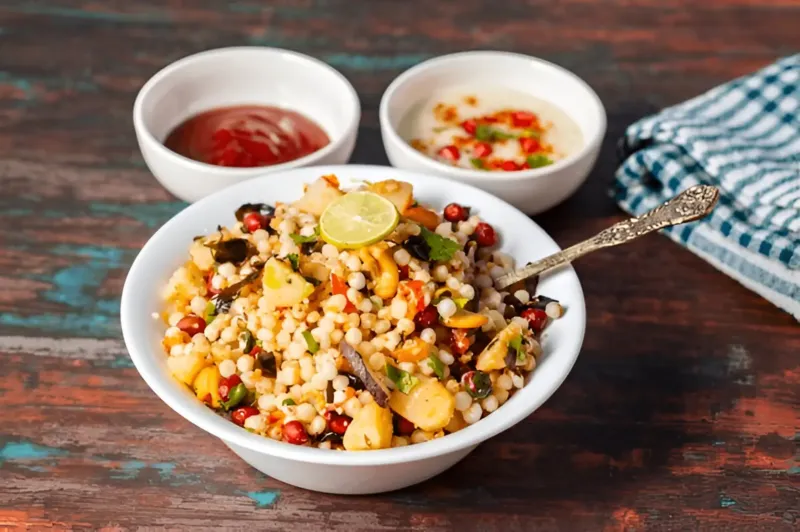
Introduction: The Essence of Upvasachi Shabudana Khichadi
Upvas, or fasting, is an integral part of Indian culture and is often accompanied by a variety of traditional recipes specifically tailored for these occasions. Fasting foods are typically simple yet nutritious, crafted to provide sustenance without violating the dietary restrictions associated with various religious fasts. Among the most popular fasting dishes is sabudana khichadi, a staple that holds significant importance due to its nutritional balance and satisfying nature. This dish is made from tapioca pearls (sabudana), peanuts, potatoes, and mild spices, providing a good source of carbohydrates and proteins essential for maintaining energy levels throughout the fast.The emphasis on wholesome ingredients in upvas recipes highlights the thoughtful approach to nutrition embedded in Indian culinary traditions during periods of fasting.
Essential Ingredients for Perfect Shabudana Khichadi
1]Sago pearls, peanuts, and potatoes are essential ingredients in the preparation of sabudana khichadi, a popular dish consumed during Hindu fasting periods known as upvas.
2]Sago pearls, also called sabudana, provide a chewy texture and act as the primary carbohydrate source in this dish. Peanuts are typically roasted and coarsely ground to add a nutty flavor and crunch, while potatoes are cubed and lightly sautéed for added substance and taste.
3]The spices used in sabudana khichadi include cumin seeds, green chilies, curry leaves, and salt to enhance the overall flavor profile without overpowering its simplicity.
4]These spices not only contribute to the dish's aroma but also align with dietary restrictions during fasting by avoiding garlic or onion. Understanding the traditional ingredients for upvas is crucial for anyone observing these religious practices or simply looking to enjoy this flavorful fasting delicacy.
Preparing and Soaking the Sabudana Correctly
1]Properly soaking sabudana, or sago, is essential to prevent it from becoming sticky and to ensure that it cooks evenly. To begin with, it's important to rinse the sabudana thoroughly under running water until the water runs clear, removing any excess starch that can lead to stickiness.
2]After rinsing, soak the sabudana in a shallow dish with just enough water to barely cover them; this allows the pearls to absorb moisture uniformly without becoming overly saturated. Typically, a soaking time of 4-6 hours is sufficient for most types of sabudana; however, some may require overnight soaking depending on their size and quality.
3]To test if they are ready for cooking, press a pearl between your fingers—it should easily mash without any hard center remaining.
4]By following these careful soaking techniques, you can achieve perfectly plump and separate sabudana pearls that are ideal for dishes like khichdi or vada. Ensuring proper hydration not only enhances the texture but also elevates the overall culinary experience associated with this versatile ingredient.
A Step-by-Step Cooking Guide to Make Sabudana Khichadi
Sabudana khichadi is a popular and delicious Indian dish, particularly enjoyed during fasting periods, and mastering its preparation can be rewarding for beginners.
1] To make non-sticky sabudana khichadi at home, start by rinsing the sabudana (tapioca pearls) thoroughly under running water until the water runs clear to remove excess starch.
2]Soak them in just enough water to barely cover them for about 4-6 hours or overnight, ensuring they absorb enough moisture without becoming mushy.
3]Once soaked, drain any excess water and check their texture; the pearls should be soft but retain their shape when pressed between fingers.
4]Heat some oil or ghee in a pan and add cumin seeds followed by chopped green chilies and curry leaves for an aromatic base. Next, add boiled potatoes and roasted peanuts for added texture and flavor before stirring in the soaked sabudana with a pinch of salt and sugar to taste.
5]Cook on low heat while gently stirring until the pearls become translucent; this indicates they are cooked perfectly without sticking together.
6]Garnish with fresh coriander leaves and lemon juice before serving hot, offering a delightful balance of flavors that beginners can easily achieve with these simple steps.








Showing 0 verified guest comments